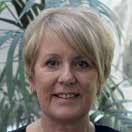Advocacy and engagement
As the leading body for women’s health in Australia and New Zealand, RANZCOG takes an active advocacy role through the development of statements and guidelines, by contributing to health policy debate, providing representation on various external committees and advisory groups, and responding to requests for submissions. These activities, undertaken by our representative members on an entirely voluntary basis, provide a critical voice in the women’s health discourse and raise the profile of RANZCOG as the ‘go to’ authority for women’s health. As an expert body, the College is able to draw on extensive expertise and evidence when providing advice to various government departments, agencies and other entities, and has become increasingly involved in these activities over the past few years.
In past reports, I have outlined the College’s objective of confirming its role as the preeminent authority for women’s health in Australia and New Zealand; a crowded space that has become populated with
- plethora of well-informed and less-informed ‘experts’. The media, particularly social media, has become the de-facto handbook for many women’s health issues and the College is frequently called upon to provide an authoritative and evidence-based opinion within an often noisy debate. RANZCOG holds a unique position in this paradigm as a non-partisan and objective body whose primary goal is to promote and support women’s health; it is not reliant on external funding and can maintain its independence.
A consensus-based approach
One of the challenges of being a membership organisation that advocates for a cause is the ability to reach consensus on matters of importance. Evidence-based guidelines are expensive to develop and require significant resources to produce. The statements produced by the College are done so on a consensus basis and involve extensive discussion, refinement and multiple drafts. It is almost impossible to develop a statement with which everyone agrees; however, the process is undertaken with mutual respect for professional expertise and opinion and is implemented in a rigorous and comprehensive manner.
More recently, the development of statements, submissions and responses has been considered through the lens of engagement and inclusiveness. Further enhancements to the manner in which these documents are produced are being examined to ascertain how more of our members may be able to contribute to the process. There is a significant body of knowledge existing within the College that is not always accessed and we are now contemplating strategies for tapping into this expertise. By taking an inclusive approach to the development of these resources, RANZCOG will have access to a much deeper pool of knowledge which will, in turn, enhance the quality of the finished product. We will keep you apprised of progress in this area and the manner in which you may be able to contribute your views and opinions in the development of RANZCOG statements and other documents.
O&G workforce
In 2012, Health Workforce Australia produced a report titled ‘Health Workforce 2025’ that provided projected supply and demand figures for doctors and nurses, including the medical specialities. At that time, there was a predicted shortfall of obstetricians and gynaecologists, despite the increase in medical student intake and ongoing numbers of international specialists entering the workforce. The modelling is currently being further refined to take into account productivity and economic factors as well as changes to demographics due to the increase of women entering the profession, retirement numbers and changing patterns of work.
The increased medical student intakes and associated demand for vocational training places has put pressure on the training pipeline as supply has not kept up with demand. These ‘bottlenecks’ have occurred at various points in the training continuum; interns, specialist training and now there are increasing concerns about numbers of O&G specialists seeking positions once they have obtained their Fellowship. Concerns have also been raised about adequate access to procedures as many tertiary centres remain the primary training site for registrars.
However, despite the apparent over-supply of O&G specialists, predictions are still for a shortfall by 2025 if the current arrangements stay in place. The problem remains that of distribution, or more accurately, mal-distribution; metropolitan areas have reached saturation point and rural and regional areas are suffering ongoing shortages. Strategies and initiatives continue to be developed; the latest, announced by the Australian Government in April, aims to increase rural and regional access to high-quality medical services, including specialist medical care.
RANZCOG acknowledges the concerns of some members regarding future workforce numbers, but also recognises its role in the health workforce planning scenario, which is to provide a well-trained, high-quality O&G workforce that meets the health needs of the community. While the College relies on the jurisdictions to determine numbers of trainees entering the program, each training site must be able to attain the appropriate standard in order to retain its accreditation status. Those sites that are unable to provide adequate training (for example, procedural numbers) will find that their accreditation will be affected. This may lead to a natural attrition regarding numbers of trainees being appointed to large, metropolitan hospitals.
Current initiatives, such as STP funding, which provides funding for training in private settings, and the newly introduced Integrated Rural Training Pipeline for Medicine aims to result in more O&Gs choosing to practise in rural and regional areas. As always, RANZCOG’s Provincial Fellows play an important role in supporting and advocating for O&Gs working in these settings.
Regional Scientific Meetings
Speaking of regional settings, two highly successful RANZCOG meetings were held recently: one in Albury, which was a combined meeting of the Provincial Fellows, Victorian and Tasmanian Committees, and the other in the Barossa Valley, hosted by the South Australian/Northern Territory and Western Australian Committees. Both meetings were well attended and included a number of interesting speakers and workshops. Thank you to all those who volunteered their time to facilitate, present and assist with the organisation of these meetings. Thank you also to the staff for all their hard work in preparing for and supporting these events.
By the time you read this, we will be counting down to the Annual Scientific Meeting, which is being held in Auckland this year; I hope you are able to attend and look forward to seeing you in New Zealand.






Leave a Reply